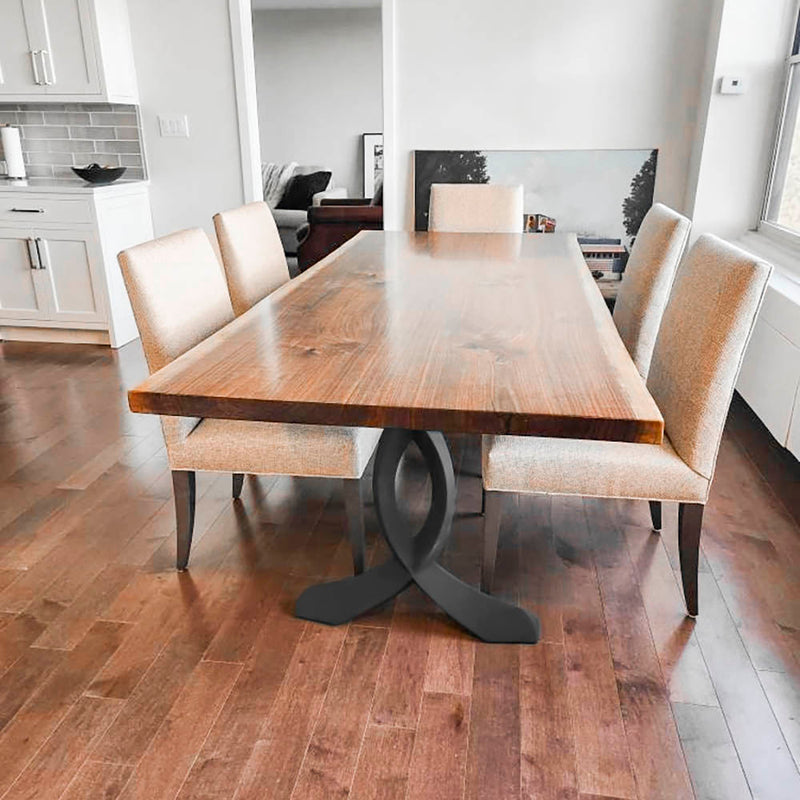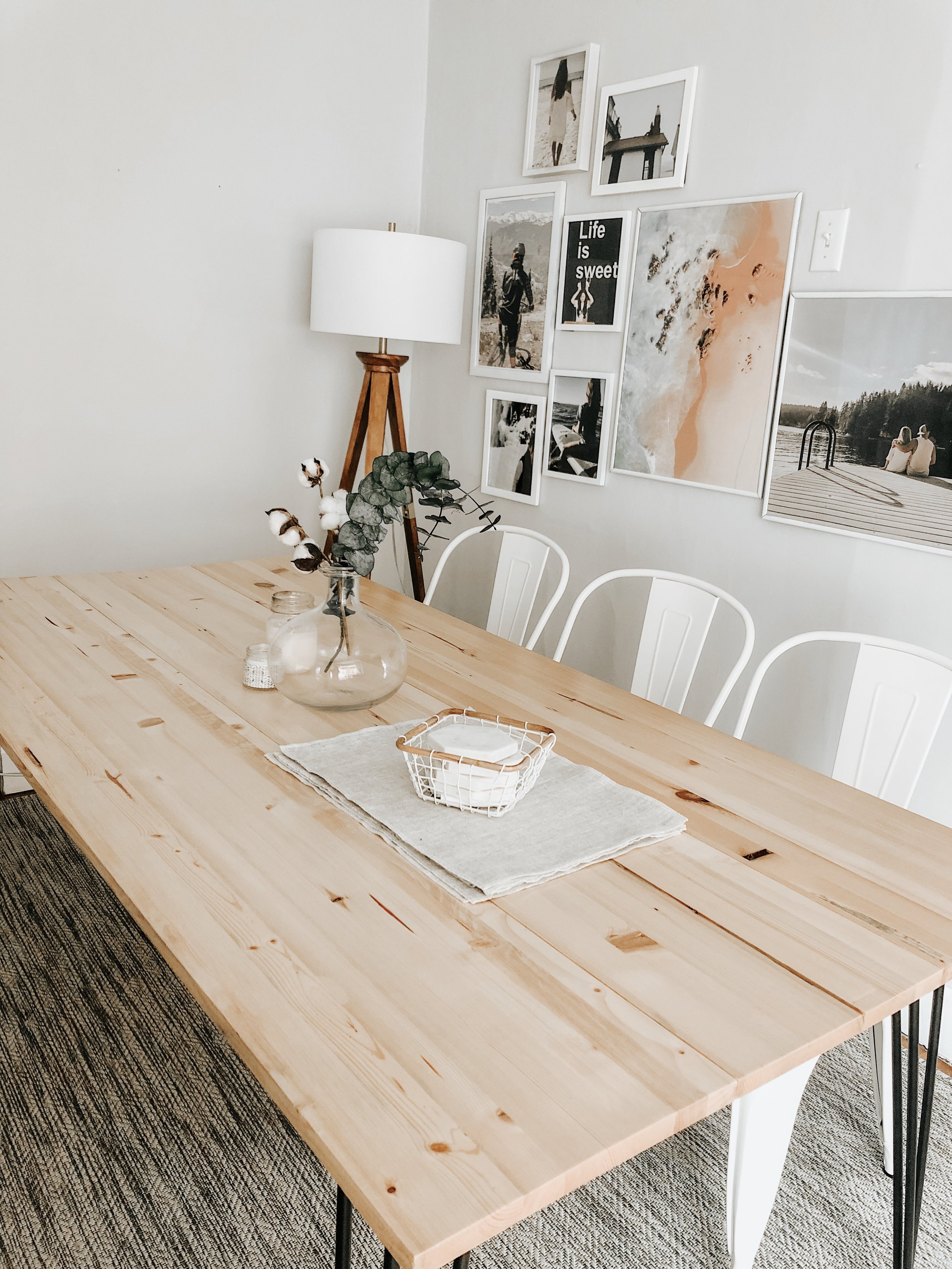From Standard to Modern: Discover the Perfect Dining-room Table Legs for Your Style
While traditional layouts such as cabriole and transformed legs evoke a sense of classic sophistication, contemporary designs like hairpin and geometric choices offer an opportunity for striking visual rate of interest. As you consider these aspects, the inquiry continues to be: just how can you seamlessly integrate these diverse leg designs to create an unified eating experience?
Understanding Table Leg Styles
The variety of dining-room table leg styles can substantially affect both the aesthetic appeals and performance of the space. Each leg style contributes distinct visual elements and useful features, satisfying varied layout choices and use demands. Understanding these styles is crucial for picking the best table that aligns with your total interior decoration vision.
As an example, conical legs supply a clean, classic appearance that can boost a space's elegance, while stand bases supply stability and make best use of legroom, making them perfect for smaller spaces. Barrette legs, a characteristic of mid-century contemporary layout, present a commercial style, enabling for an airy, open feeling. Likewise, trestle legs evoke rustic appeal, providing robust support and a sense of eternity.
Furthermore, the option of materials plays a considerable role. Wood legs can bring heat and structure, whereas metal options often share a sleek, contemporary vibe. Inevitably, recognizing table leg styles is necessary for creating a natural eating area that reflects personal design while ensuring usefulness and comfort. By attentively considering these components, you can boost both the practical and aesthetic allure of your dining space.
Conventional Table Leg Options
When selecting dining room table legs, traditional options commonly personify timeless beauty and workmanship. These layouts mirror a rich heritage and a dedication to high quality, making them ideal for those who appreciate classic aesthetic appeals.
Among the most iconic conventional leg styles is the cabriole leg, characterized by its stylish bent shape. This design frequently features decorative carvings and is most typically found in Queen Anne and Chippendale furniture. Another popular option is the turned leg, which flaunts a collection of smooth, rounded shapes that give a classic look while maintaining security.
In addition, the straight leg, while easy, offers a strong and basic structure that can mix flawlessly with a variety of tabletop designs. For those attracted to ornate describing, claw-and-ball feet legs stimulate a sense of grandeur and can serve as a spectacular focal point in any eating space.
Finally, pedestal bases, although not purely legs, provide an alternative typical alternative that enables for enough legroom and can be perfectly sculpted. Each of these traditional leg designs adds to the overall atmosphere of a dining-room, weding function with aesthetic allure.

Modern Table Leg Designs
Modern table leg designs anonymous offer a diverse series of styles that emphasize innovative products and clean lines. These styles typically focus on performance while acting as striking prime focus within a dining room. Minimal appearances prevail, with legs crafted from products such as steel, glass, and engineered wood, which add to a airy and modern feeling.
One popular style is the hairpin leg, defined by its slim, tapered structure that supplies stability without overwhelming the table top (dining room table legs). This design is typically located in mid-century modern-day furniture and can easily enhance various table shapes. Another fad is the usage of geometric forms, where legs might take on unbalanced or angular forms, adding visual passion and a touch of virtuosity

Mixing Designs for Special Areas
Usually, home owners look for to produce distinct dining spaces that mirror their individual style by mixing various layout elements. This strategy permits the unification of varied visual appeals, resulting in an unified yet distinct atmosphere. Matching a rustic wooden table with smooth, modern-day metal legs can create an attractive comparison that boosts the area's overall appeal.
Furthermore, incorporating vintage table legs with contemporary tabletops can evoke a sense of history while preserving a modern-day sensibility. Such mixes not just display specific preference but additionally motivate imagination, enabling house owners to curate a room that feels both individual and inviting.
Color plays a critical role in this mixing process; picking table legs that complement or comparison with the existing color pattern can improve aesthetic passion. For instance, whitewashed legs can soften the daring of a dark table surface area, creating a well balanced visual.
Tips for Selecting the Right Legs
Picking the right table legs is crucial for achieving both capability and aesthetic allure in your eating area. Begin by considering the overall design of your area. Traditional setups take advantage of legs that include intricate makings or turned styles, while modern areas might ask for streamlined, minimalist styles.
Next, examine the elevation and security of the legs. dining room table legs. Standard dining tables range between 28 to 30 inches in height, so guarantee the legs complement this measurement for comfort. Furthermore, durable materials, such as wood or metal, can improve security and long life
Review the leg form also-- options consist of directly, tapered, or stand designs. Straight legs provide here a traditional look, while conical legs can add a touch of elegance. Pedestal bases offer sufficient legroom and are perfect for smaller sized areas.
Conclusion
In recap, selecting the suitable dining-room table legs requires mindful consideration of both modern and standard styles. Standard alternatives such as cabriole and turned legs offer timeless style, while modern-day styles like hairpin and geometric shapes provide a modern touch. By balancing leg design, elevation, and material with the total decoration, a cohesive and inviting environment can be achieved. Ultimately, the selected table legs must show the wanted aesthetic, improving the dining experience within the space.
The selection of dining room table leg styles can dramatically affect both the visual appeals and capability of the area. Ultimately, comprehending table leg styles is crucial for creating a natural eating area that mirrors individual design while making certain practicality and comfort.One of the most iconic standard leg styles is the cabriole leg, defined by its elegant curved form. Straight legs supply a timeless appearance, while conical legs can include a touch of style.In recap, choosing the ideal dining space table legs needs site cautious consideration of both modern and standard designs.